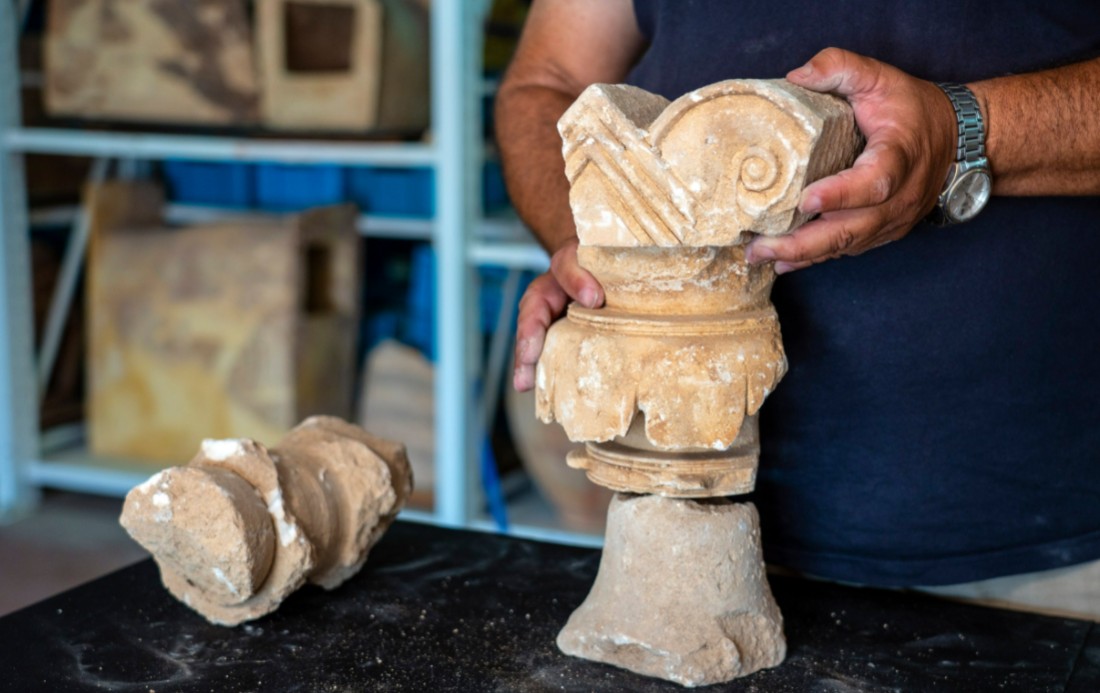Unearthing History: Ancient Bathroom Found in Jerusalem
A rare First Temple-era toilet was discovered in an ancient royal estate at the Armon Hanatziv promenade in Jerusalem. Only about ten such toilets from this period are known to exist, making it a significant find.
 The rare stone toilet (Photo: Yoli Schwartz, Israel Antiquities Authority)
The rare stone toilet (Photo: Yoli Schwartz, Israel Antiquities Authority)(Photo and editing: Gil Mezuman, City of David)
A rare toilet from the First Temple period, part of an ancient royal estate from the end of the Judean kings' era (7th century BCE), has been discovered at the Armon Hanatziv promenade in Jerusalem.
In the archaeological record, only about ten toilets from the First Temple period are known today. This rare find was uncovered during an Israel Antiquities Authority excavation at the promenade that began about two years ago. The excavation revealed remains of a grand structure overlooking northwards towards the City of David and the Temple Mount, within which the toilet was found.
The toilet room was carved as a rectangular cell, with a designed toilet standing over a septic tank carved into the depths. The limestone toilet was crafted for comfortable seating, featuring a central hole.
"Private toilets were extremely rare in antiquity, and only a handful have been found to date, most of them in the City of David," explains Yaakov Billig, the excavation director from the Israel Antiquities Authority. "In fact, only the wealthy could afford such a luxury. A thousand years later, during the time of the Mishnah and Talmud, when sages defined criteria for wealth, Rabbi Yossi suggested that a rich person is 'anyone who has a toilet close to their table' (Babylonian Talmud, Tractate Shabbat, page 25b)."
Beneath the toilet, a septic pit containing a large amount of First Temple period pottery and animal bones was found. The finds were meticulously collected, including the soil fill. Research may reveal insights into the lifestyle and diet of First Temple inhabitants, as well as ancient diseases.
 An oil lamp found in the septic pit beneath the toilet (Photo: Yoli Schwartz, Israel Antiquities Authority)
An oil lamp found in the septic pit beneath the toilet (Photo: Yoli Schwartz, Israel Antiquities Authority)Additionally, archaeologists identified indications that a garden with ornamental trees, fruit trees, and aquatic plants was planted near the toilet. These elements allow researchers to reconstruct the scene of a lush and expansive estate, likely a grand palace from the First Temple period that once stood there.
 One of the balustrade posts in the royal estate window (Photo: Yaniv Berman, Israel Antiquities Authority)
One of the balustrade posts in the royal estate window (Photo: Yaniv Berman, Israel Antiquities Authority)The excavation at Armon Hanatziv is being conducted in preparation for a new tourist complex at the site. The complex is a collaborative effort of the Elad Foundation (City of David), the Ministry of Tourism, the Jerusalem Municipality, the Ministry of Jerusalem Affairs, and the Jewish National Fund.

